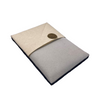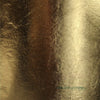Gold Across the World - Barbados
- by Sam Wozniak
The Hidden Legacy of Gold Leaf in Barbados: From Colonial Glamour to Modern Restoration
The island nation of Barbados is often celebrated for its sugar cane legacy, coral stone architecture, British colonial styles, and tropical charm. What receives far less attention, however, is the story of gold leaf and gilding as they have been used — or in many cases, minimally used — in Barbadian art, architecture, and restoration. In this article, we trace what is known (and what remains speculative) about gold leaf’s presence in Barbados, examine modern restoration challenges, and explore how gilding might yet become part of the island’s cultural heritage narrative.
Colonial Barbados, Architectural Styles, and the Scarcity of Gilding
When British colonists settled Barbados in the early 17th century, they brought with them architectural styles, construction techniques, and decorative ambitions common in Britain. Over time, these merged with practical responses to climate, local materials (like coral stone), and adaptation to hurricanes. The architectural tradition in Barbados is thus rooted in Georgian, Jacobean, Gothic, and vernacular colonial design, rather than the heavily decorated Baroque or Rococo styles often associated with gilding.
Because Barbados did not experience the kinds of vast wealth influxes from gold mining or the same religious and courtly patronage systems seen in Europe or Latin America, large-scale monumental gilding was seldom used. In many churches and public buildings, decorative priorities leaned more toward plaster mouldings, painted woodwork, stained glass, and carved stone rather than lavish gilded surfaces.
Still, some churches built in Barbados over the centuries might have employed modest gilding — for altar details, frames, or icon embellishments — though documentation is sparse. For example, St. John’s Parish Church has undergone numerous reconstructions, including after major hurricanes; records describe the careful craftsmanship and woodwork, but little surviving evidence of widespread gold leaf ornamentation.
Thus, one might say that gilding in Barbados, historically, existed more in smaller decorative accents rather than in sweeping, monumental displays of pure goldleaf across massive architectural spans.
The Restoration Imperative: Heritage, Conservation, and “Hidden Gold”
In recent decades, awareness has grown in Barbados about the value of preserving historical buildings, both for national identity and for heritage tourism. Many structures are in need of restoration, and local voices have begun referring to the island as “sitting on heritage gold,” meaning that many derelict historic buildings could be revived to glory.
When restoration work is proposed, especially for churches, manor houses, or colonial-era buildings, the question of gilding sometimes arises: should gold leaf be reintroduced, or should restorers stick to historically documented finishes? Because original gilded elements (if they existed) were likely limited or lost, restoration often leans toward conservation of existing wood, stone, plaster, and painted surfaces rather than re-gilding entire facades.
That said, the restoration of architectural features does open room for introducing gold leaf in a sensitive, limited way — for example, gilded frames, capitals, or detailing. However, restoring or adding monumental gilding on grand scale would be a departure from most historic Barbadian practice.
Case Study: The Parliament Buildings and Coral-Limestone Facades
One of the most iconic buildings in Barbados is the Parliament Buildings in Bridgetown, built between 1870 and 1874 in a neo-Gothic style adapted to local materials. These buildings use coral-limestone facades, with fine detailing in plaster, stone carvings, and cast-iron railings. While they aren’t known for sweeping goldleaf ornamentation, they represent the highest ambitions of decorative public architecture on the island in the 19th century. In a restoration scenario, gilding small elements (e.g. clock faces, interior mouldings) could be contemplated — especially using 23.5 carat gold leaf to maintain balance between aesthetic brilliance and structural durability.
Because pure 24 carat gold leaf is extremely soft, restorers often favour 23.5 carat (or near-pure) goldleaf for architectural detail — the slight alloy makes it more resilient to handling, weathering, and adhesion. In Barbados, where salt air and humidity are constant threats, any gilded element must be carefully protected and maintained.
Heritage Forts, Military Architecture, and Stabilization
Bridgetown’s UNESCO World Heritage designation includes its Garrison Historic Area, which features Saint Ann’s Fort, the Main Guard House, and other military structures. These are primarily stone, brick, or coral constructions with a focus on defense rather than ornamental opulence. Gilded elements would historically have had limited use in fortifications; most metalwork (guns, cannons, railings) were painted or finished in matte metals.
However, in the course of restoration, some decorative metal fixtures (like door fittings, inscriptions, or signage) might be candidates for tasteful gilding. In that event, modern restoration teams would likely use 23.5 carat gold leaf, possibly over a base of suitable primer and under protective coatings to resist corrosion in the tropical marine climate.
Selected Restoration Success: Morgan Lewis Sugar Mill
While not directly about gilding, restoration of the Morgan Lewis Sugar Mill in St. Andrew is a notable example of Barbados’ heritage conservation work. Built in the colonial period and later decommissioned in 1947, the mill was fully dismantled and restored between 1997 and 1999, reopening with its sails functional again and its structure preserved.
Though no records suggest that gold leaf elements were part of that mill’s interior, the project demonstrates that Barbados has the capacity for ambitious monumental restoration. If future restoration or adaptive reuse included gilded interior ornamentation (for example, in a visitor centre or interpretive exhibit), the same careful approach would apply: choosing where gilding makes sense, selecting durable goldleaf (often 23.5 carat), and protecting it against climate stressors.
Potential and Challenges for Introducing Goldleaf Today
Given the tropical climate, salt-laden air, UV exposure, and periodic hurricanes, gilding in Barbados faces substantial challenges. Even high-quality 24 carat gold leaf can degrade or discolor if bonded poorly or unprotected. More commonly, restoration and decorative teams prefer near-pure 23.5 carat goldleaf or gold alloys that retain a brilliant shine while gaining slight hardness and adhesion advantages.
If Barbados were to expand gilded decoration (especially in interiors, altarpieces, signage, frames, or ceilings), a few best practices should guide that expansion:
-
Selective Use: Avoid over-gilding entire exteriors; focus instead on accents (capitals, mouldings, signage, frames) to balance visual impact with maintenance cost.
-
Appropriate Undercoats and Adhesion Layers: Use proper gesso, bole, or primer layers suited to coral-limestone, plaster, wood, or metal substrates.
-
Protective Coatings: Seal gilded surfaces with varnishes or micro-encapsulation techniques that allow light reflection but guard against corrosion and moisture.
-
Periodic Maintenance: Establish cycles of inspection and touch-up, because in a tropical environment even well-applied gold leaf will require upkeep.
-
Historical Sensitivity: When gilding historic structures, balance authenticity and heritage preservation — introduce gilding only where historically plausible or interpretively justified.
Because Barbados has relatively few documented golden embellishments, contemporary gilding (especially 24 carat or 23.5 carat) may more often appear in new gallery installations, monuments, or interior restoration rather than in re-creating lost colonial gilding on a massive scale.
Contemporary Art, Monuments, and the Role of Gold Leaf
Outside of restoration, modern artists and monuments present opportunities for goldleaf creativity in Barbados. Sculptors or mixed-media artists might choose 24 carat gold leaf in gallery pieces to evoke luxury, light, and symbolism. Monumental public sculptures could use gilded elements — for example, gilded plaques, letters, or details — provided those are engineered for durability.
One recent example of local public art is the “Builders of Barbados Wall,” which seeks to capture historical and cultural narratives in a monument. While I did not find specific mention of gold leaf in that project, the concept invites inclusion of gilded inscriptions or accents to elevate certain elements (e.g. names or motifs).
As Barbados invests more in cultural tourism and heritage tourism, gold leaf may become part of marketing: gilded signage, museum interiors, exhibit labels, and restored frames. The use of gold leaf in interpretive signage or interior accents can tie modern visitor experience to a sense of prestige and continuity with historic craftsmanship.
Summary: Between What Was and What Could Be
Gold leaf and gilding in Barbados exist today more as latent possibilities than extensive historical tradition. Because the island lacked the massive patronage systems that supported gilded churches in Europe or Latin America, most Barbados buildings never featured broad, monumental goldleaf ornamentation.
However, Barbados’ restoration ethos and burgeoning heritage sector mean that goldleaf restoration may play a role in the future — especially in selective applications (frames, signage, interior detailing). The restoration of major structures like the Morgan Lewis Mill and the preservation of colonial architecture demonstrates that the technical ability for ambitious heritage work exists. If used judiciously, gilding — whether 24 carat goldleaf for pure brilliance or 23.5 carat for added resilience — could become a small but shining thread in Barbados’ evolving architectural and cultural identity.






